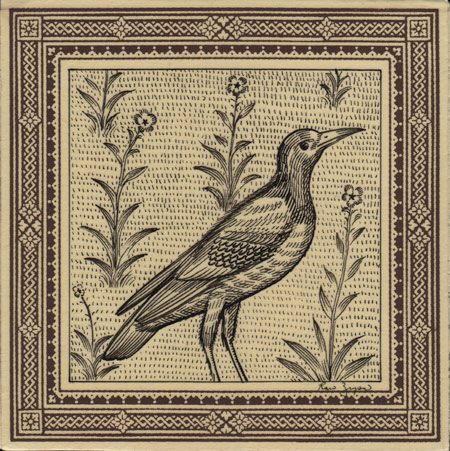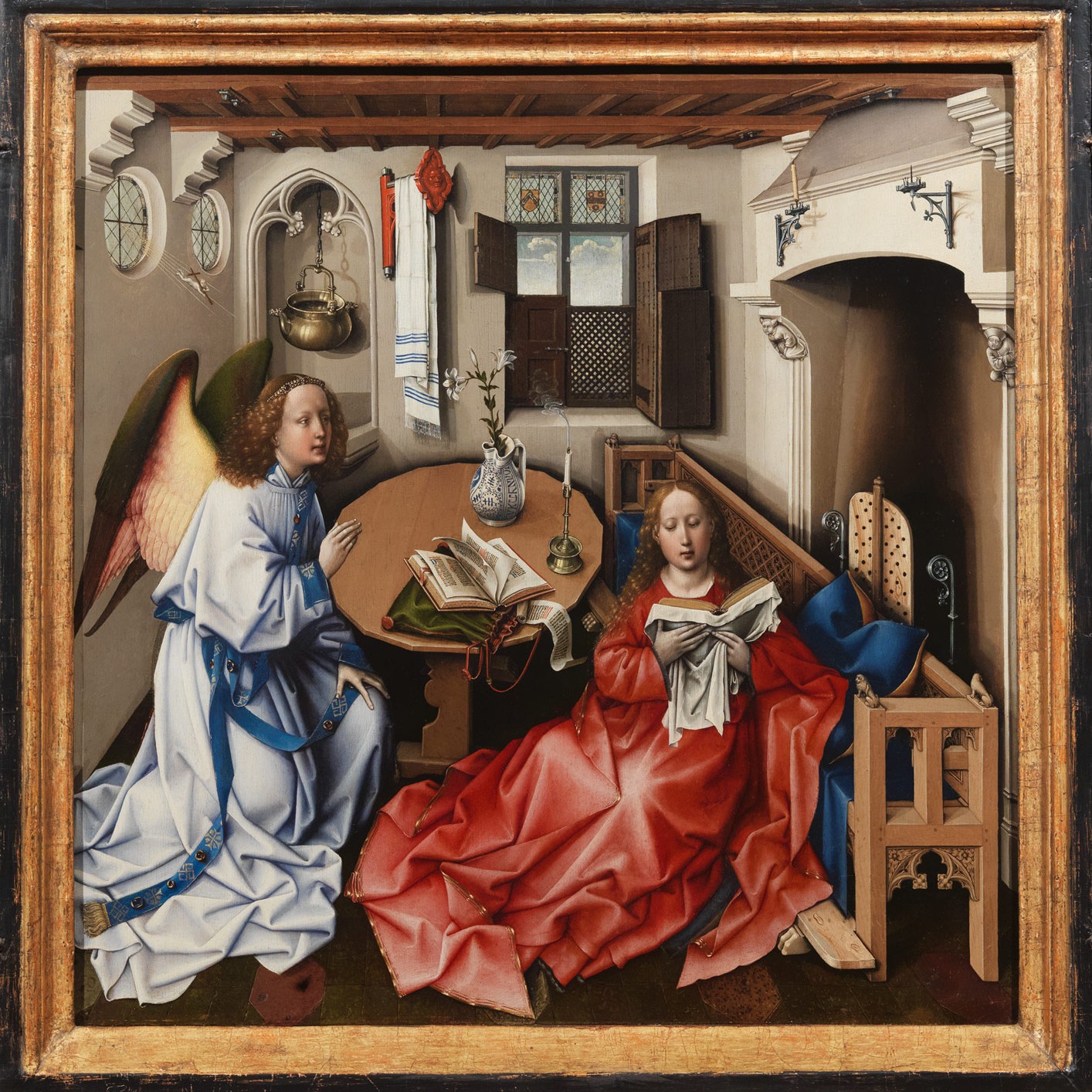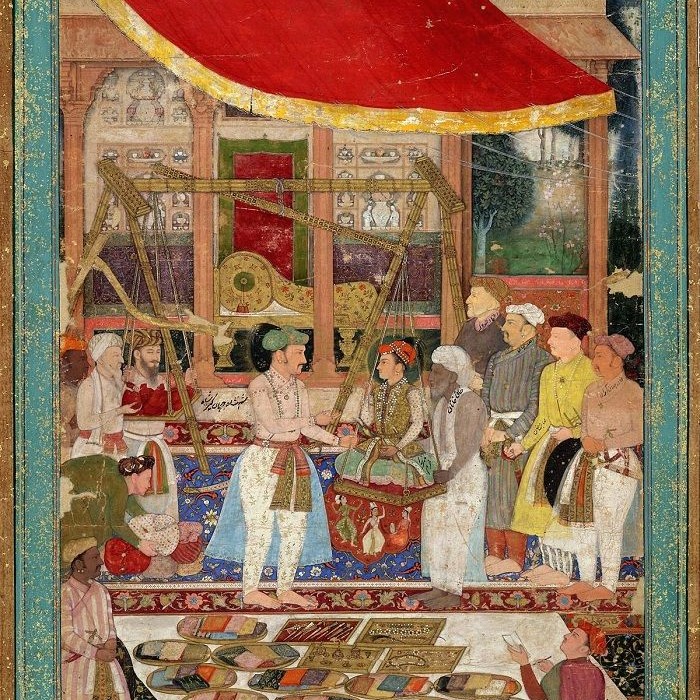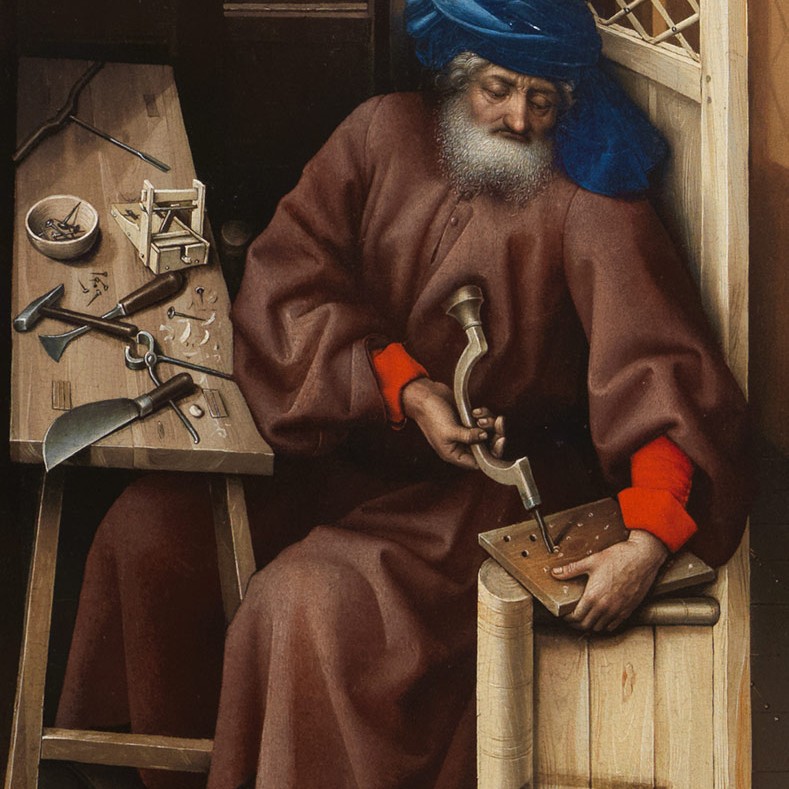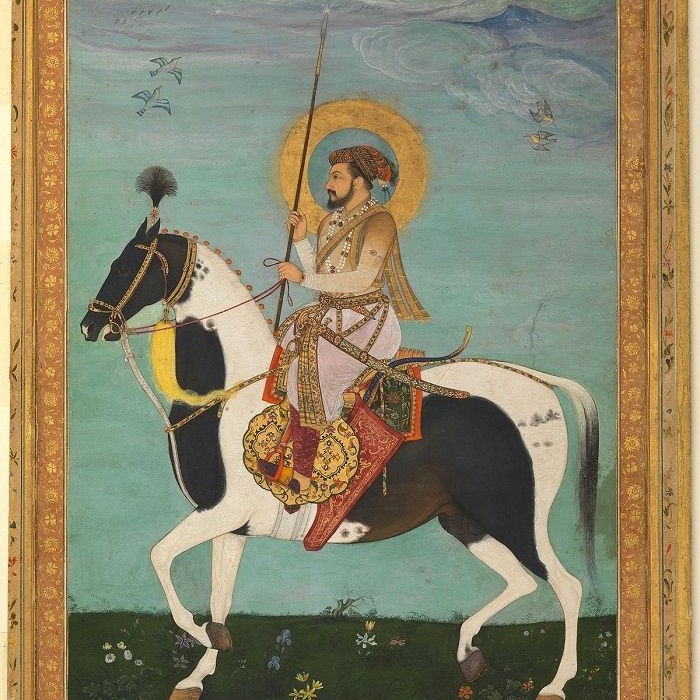FLEMISH PRIMITIVES AND MUGHAL MINIATURES
Each of these art movements share an aspect of near perfect technical achievement in one arena while the culture’s science and mathematics had not advanced enough to afford perfection in another.
Both Mughal miniatures and Flemish paintings depict warm, breathing, human characters (particularly faces) with previously unimagined detail and proportions that began to approach realism. Neither group, however, understood the mathematics behind perspective, so the universes these vibrant living beings occupy is either flat and vertical (in the case of the miniatures) or oddly misshapen (in the Flemish paintings).
These are not failures however, particularly to us, the modern audience. In both cases the paintings are improved. They are unique and special to these cultures and these visual vocabularies, full of idiosyncratic richness that would not have been present had perspective been understood. In fact, I suspect that this problem solving, done in lieu of mathematical correctness, was both the result of and the cause of a specific way of comprehending reality, affording the creators and the viewers of these time periods a cognitive set substantially different from any today—one that may have perceived articles of truth that we can no longer access.

